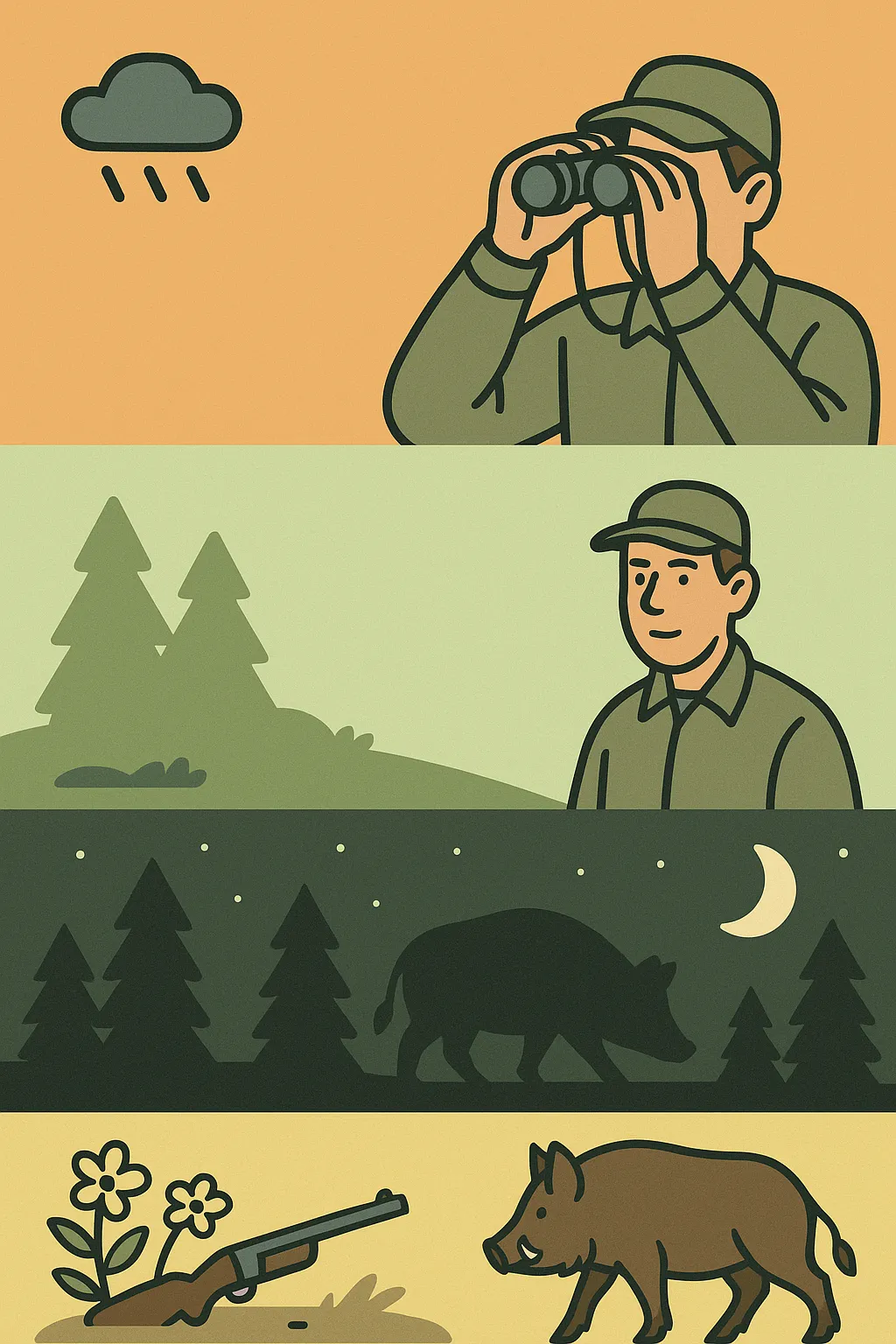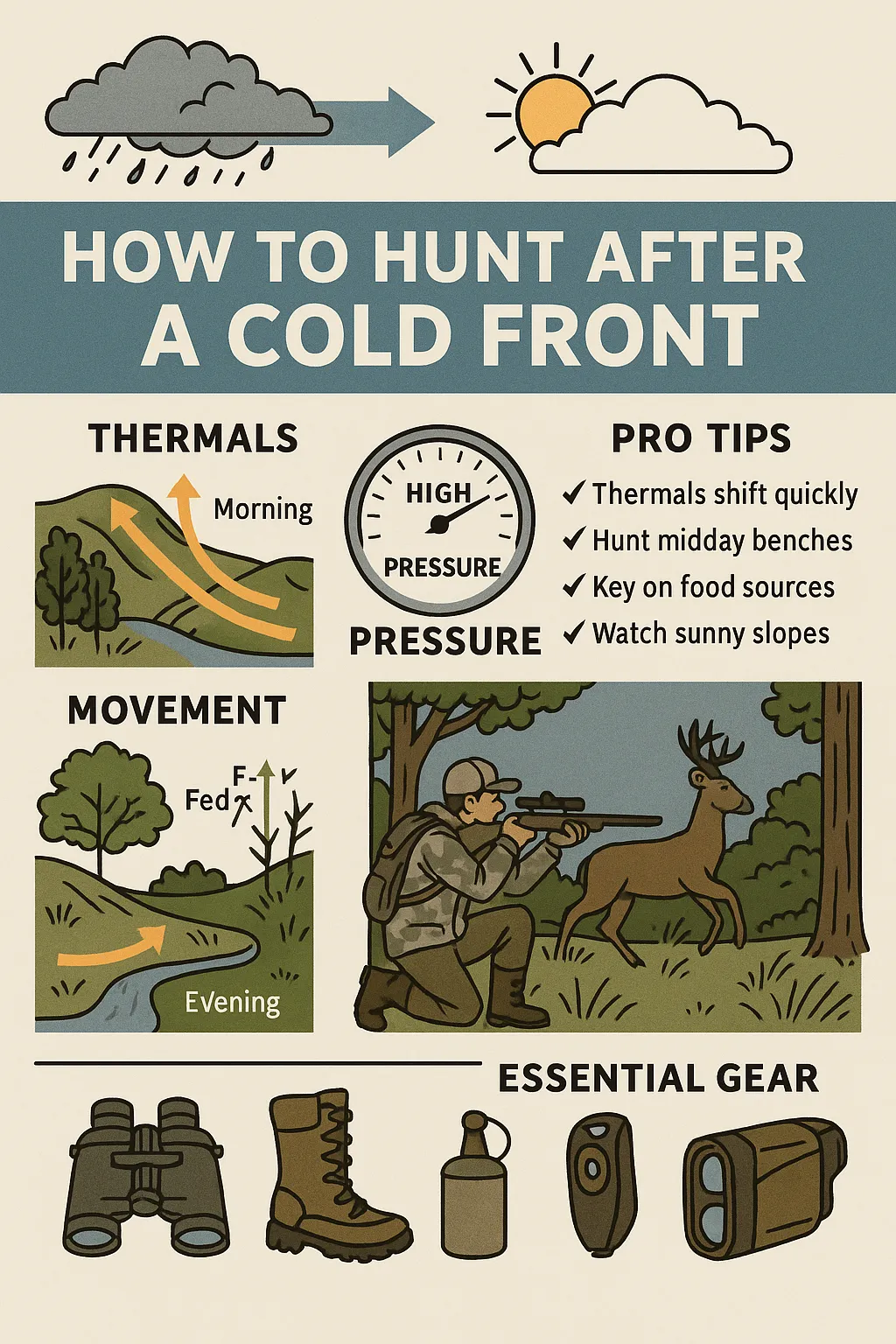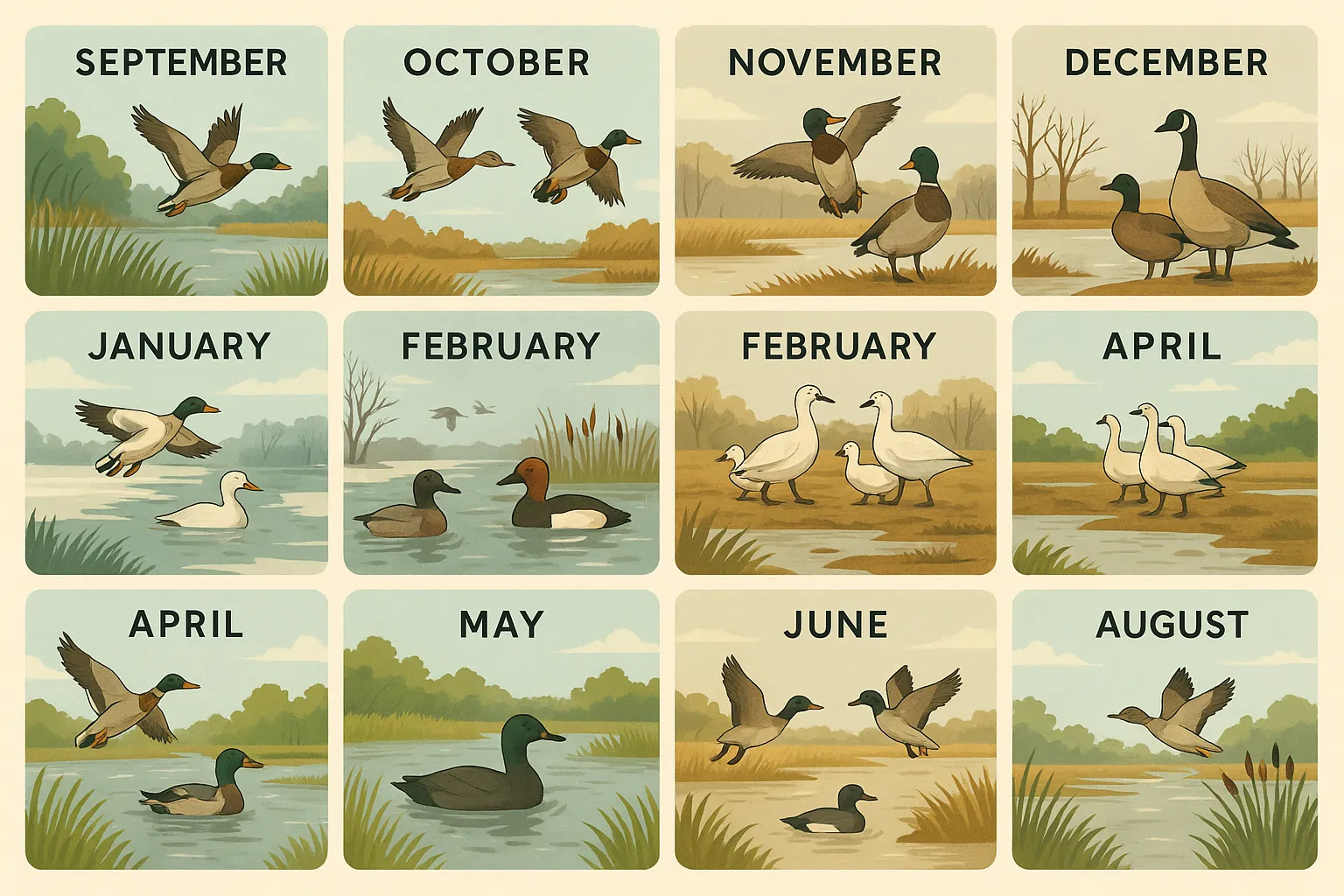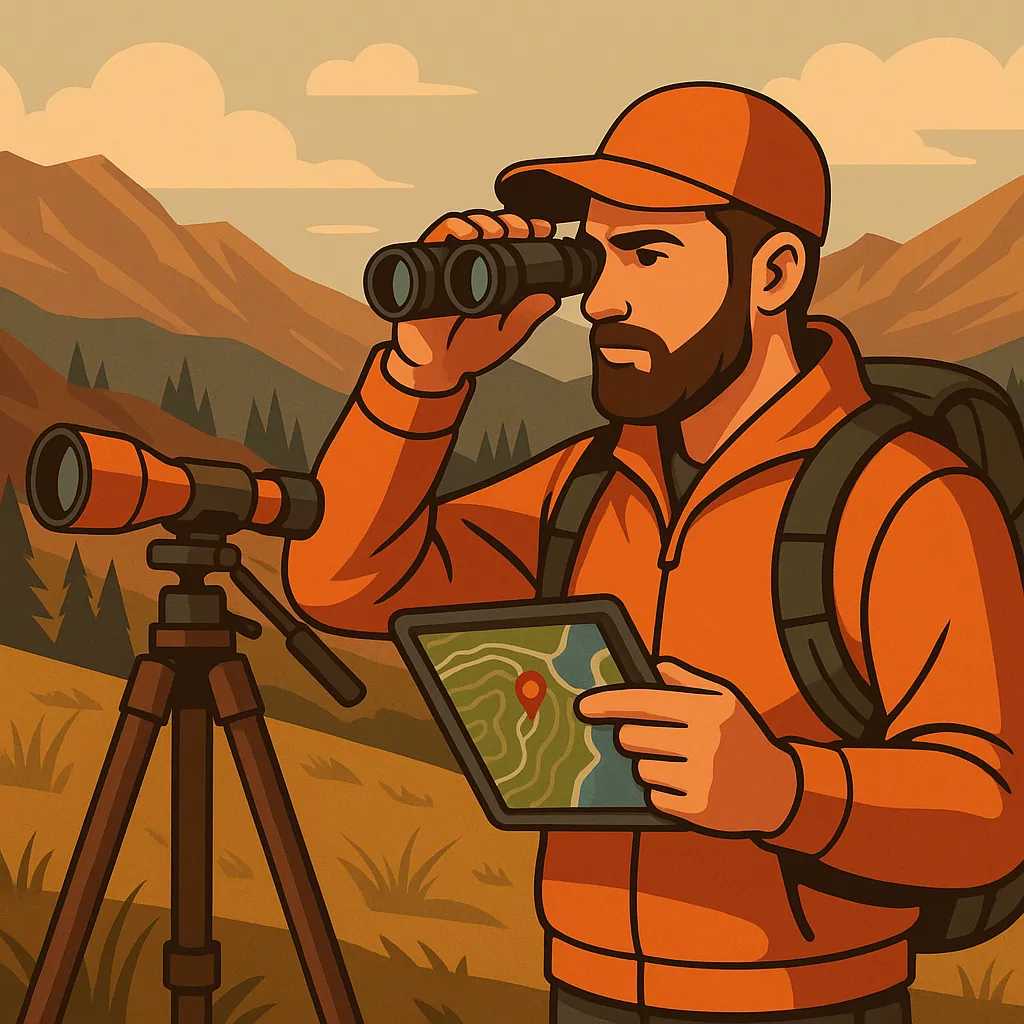
Southeastern Hog Hunting Tactics by Month
Feral hogs in the Southeast don’t follow deer-season rules—or care about calendar dates. They breed year-round, move unpredictably, and destroy everything from peanut fields to pine flatwoods. That’s the bad news. The good news? With monthly insights and smart adjustments, hunters can pattern hogs more consistently and fill freezers 12 months a year.
📅 January–February: Winter Herd Patterns
🧠 Behavior Overview:
-
Boars often roam solo
-
Sounders (groups of sows, juveniles, and piglets) cluster tight
-
Colder temps = more daytime movement, especially around bedding
📍 Tactics:
-
Focus on bedding thickets near food—especially swamp edges and briar patches
-
Hunt late afternoons near acorn flats and clear-cut trails
-
Use fresh scat, wallows, and rooted-up soil to triangulate movement
🔊 Calling Tip: Use distress squeals to pull in boars curious or aggressive from a distance.
🎙️ “I shot a 250-pound boar on Super Bowl Sunday with a .308—bedded down in a palmetto tangle 50 yards from a peanut field.”
— Ray T., Georgia
🌼 March–April: Spring Green-Up & Sows in Heat
🧠 Behavior Overview:
-
Breeding activity increases—boars follow sounders
-
Spring forage like clover and new grasses draw hogs into open woods
-
Water sources become more important as temperatures climb
📍 Tactics:
-
Stalk field edges at dawn and dusk, especially near creek-bottoms
-
Place trail cams on game trails near wallows or water tanks
-
Use estrus-sow scent attractants for boar targeting
🎯 Best Gear: Thermal monocular + still-hunting combo. Move slow. Observe before you commit.
🎙️ “I tagged a boar in April that circled downwind three times before he committed to the call. Don’t skimp on scent control.”
— Joel M., Alabama
🔥 May–June: Heat, Water, and Night Hunts
🧠 Behavior Overview:
-
Hot weather = nocturnal movement
-
Hogs bed in shady creekbeds or thick hardwood hammocks
-
Wallows, ponds, and puddles become travel hubs
📍 Tactics:
-
Switch to nighttime thermal or red-light hunts near known water
-
Set feeders near shaded swamp trails but avoid overpressure
-
Use suppressed weapons if legal to reduce spooking entire sounders
🛠️ Night Hunting Must-Haves:
-
Thermal scope or clip-on
-
Quiet shooting sticks
-
Lightweight tripod or monopod
🎙️ “Late May is thermal season. I’ve filled three coolers in one week just sitting on a cattle pond from 10PM to 1AM.”
— Bryson C., South Carolina
🌽 July–August: Ag Raids & Drought Pressure
🧠 Behavior Overview:
-
Crops like corn, peanuts, and soybeans attract sounders in big numbers
-
Hot, dry weather pushes hogs to feed at night or near irrigation pivots
-
Juvenile pigs flood the groups—quick, erratic movement patterns
📍 Tactics:
-
Ambush near ag-field entry points with minimal moonlight
-
Target pinch points between feed and water
-
Use cellular trail cams for real-time hog alerts
🎙️ “We hunt soybean fields with suppressors, thermal, and group rotation. Shoot, reset, rotate. It’s team hog control now.”
— Dana F., Mississippi
🍁 September–October: Rut Restarts & Feed Cycles
🧠 Behavior Overview:
-
Some sows go into heat again—breeding picks up
-
Acorns begin dropping, shifting feed patterns away from bait sites
-
Cooler evenings bring more twilight movement
📍 Tactics:
-
Scout hardwood flats and oak ridges for fresh rooting
-
Pull cameras off feeders and into natural travel corridors
-
Ground-blind ambushes near wallows or oaks produce solid daytime chances
🎙️ “I set up a blind between a bedding swamp and a red oak ridge—had five hogs within 20 yards by 6PM.”
— Marcus L., Florida Panhandle
🍂 November–December: Big Boars on the Move
🧠 Behavior Overview:
-
Solitary boars roam in search of late-cycle sows
-
Sounders retreat to thick cover as hunting pressure ramps up
-
Cold snaps = mid-day movement, especially in sunny cutovers
📍 Tactics:
-
Still-hunt logging roads with wind in your face
-
Focus on mid-morning through early afternoon in cold spells
-
Use low-impact ambushes with quiet entry and exits
🎯 Gear Upgrade: Invest in wind-checkers, scentless boots, and soft-quiet brush pants.
🎙️ “I killed my heaviest boar the week after Thanksgiving—he was cruising solo on a firebreak at noon.”
— Darnell P., North Carolina
📦 Must-Have Gear by Season
| Gear | Best Time of Year | Why It Matters |
|---|---|---|
| Thermal scope | May–September | Nocturnal hogs + field edges = thermal kills |
| Scent-free rubber boots | Year-round | Reduce scent trails near bedding or feeders |
| Cellular trail camera | March–October | Monitor movement near crops, ponds, and trails |
| Compact shooting sticks | November–February | Mid-day stalks require stable offhand support |
| Suppressor or subsonic ammo | Summer months (if legal) | Quiet shots help manage multiple hog targets |
📣 Resources & Community References
-
Apps: HuntStand, onX Hunt, Windy
-
Videos: Pigman: The Series, Night Crew TV, Southern Hog Control
-
Forums: Hog Hunting Nation, Gulf Coast Boar Busters, Southeast Wild Boar Collective
💡 Pro Tip: Hog hunting isn’t seasonal—it’s adaptive. Let weather, food, and movement dictate your strategy, not outdated rules.
🌟 Final Shot: Year-Round Opportunity, Month-by-Month Precision
Southeastern hog hunting rewards those who adjust—not just react. From night raids in June to still-hunts in snow-dusted December, feral pigs offer some of the most dynamic, challenging, and rewarding hunting available. Adapt monthly, scout weekly, and let the land tell the story.
“If I wait for a ‘season,’ I’m already behind. The pigs don’t stop. Neither should we.”
Leave A Comment
Related Posts
How to Hunt After a Cold Front: Pressure, Thermals & […]
Hunting Waterfowl in the Mississippi Flyway: Monthly Breakdown The Mississippi […]
Western Big Game Scouting – E-Scouting and Elevation Timing In […]





